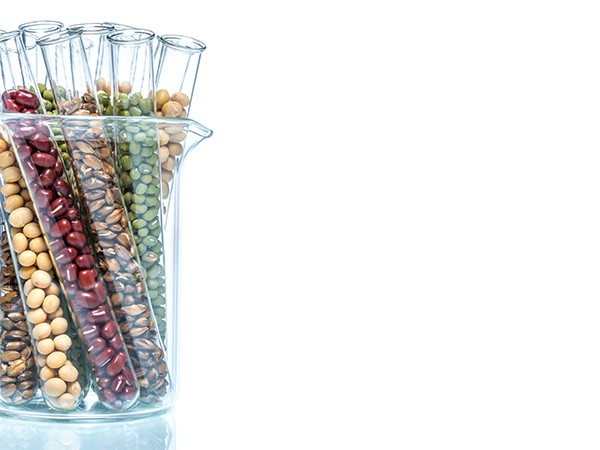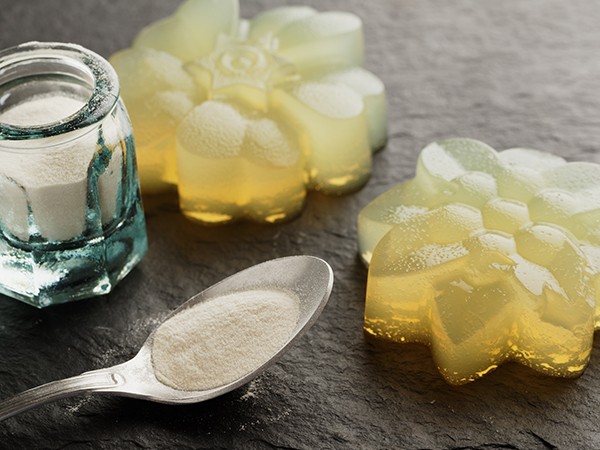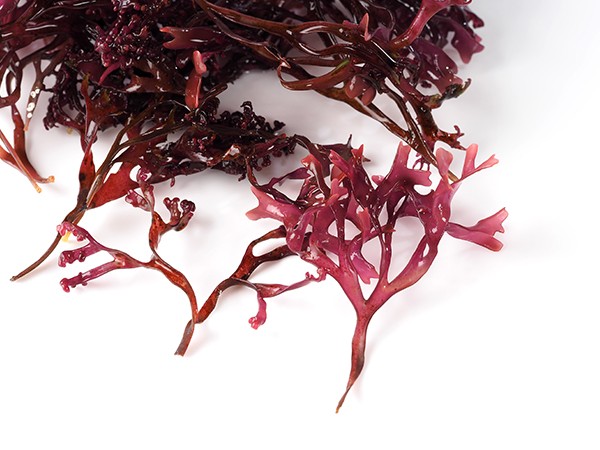
An increased awareness of sustainability, concern over the climate and personal health are drivers for the replacement of animal proteins with plant-based proteins, and the development of new products. Challenging, since animal proteins behave differently from plant-based proteins. Product developers of plant protein based products are on a quest to create a product with the right ‘bite’.
New figures (August 2019) of market researcher IRI Netherlands, show that in our shopping basket we increasingly replace real meat with products made with, for instance, white and brown beans, soy, chickpeas, mushrooms or cauliflower. Since 2017 the number of meat substitutes sold in supermarkets has increased by 51 percent.
For each new food product, consumer acceptance is an important precondition for success. In the Netherlands, we are still a bit hesitant about insects and insect flour, but seaweed, soy and other beans are becoming commonplace. The acceptance of a new food products depends on taste and taste experience. This taste experience is closely connected to the right ‘bite’, which in turn is determined by the structure of the product. Or: does the product break during consumption in the mouth, or is it rather ‘smearing’ on the palate? Compare this to eating a boiled egg (with the clear gel structure that breaks during consumption) to eating pâté (which smears in the mouth).
Replacing animal proteins one-to-one with plant-based variants is difficult, for the simple reason that the functionalities differ. For instance, many plant-based proteins form a weaker gel than animal proteins, and as a result they smear more. Adding hydrocolloids, can help improve the quality of meat substitutes. Hydrocolloids are used extensively already, for instance to replace gluten in bread, With their texturing, water and fat binding properties, hydrocolloids influence the structure and therefore the bite of a product.

A number of hydrocolloids have strong gel-forming properties, so they can give products more bite. A well-known example is agar, or ‘vegan gelatine’. The texture is more crumbly than real gelatine, as a result of which it is not always suited as gelatine replacer, but it can add extra texture to a product. Besides ager, the hydrocolloids methylcellulose, potato starch, maltodextrin and carrageen have been used extensively in meat replacers, just like alginate and various gums, such as guar gum, xanthan and Locust bean gum (www.innovamarketinsights.com). Each of these hydrocolloids has its own functionality and is capable of improving binding in a vegetable product.
Methylcellulose has excellent water and fat binding properties. The gelling of methylcellulose upon heating prevents the product from falling apart during preparation. Lower viscosity after cooling subsequently produces a juicier experience of the product.
In contradistinction, starch and maltodextrin have a more ‘smearing’ texture (no gelling). In many products these two substances are therefore used as a thickener rather than for texturing.
Another frequently-used hydrocolloid is carrageenan. Carrageenan is recovered from red seaweed and can be used to increase the stability of a product for heating. Depending on the concentration of carrageenan, salt and other substances in the food matrix chosen, carrageenan gels provides bite to the product. There are three types of carrageenan, each with its own specific properties. Kappa and iota carrageenan dissolve at high temperatures and gel at lower temperatures. (Contradictory to methylcellulose.) Lambda carrageenan dissolves in cold water and increases viscosity. Carrageenan also reacts with calcium into a gel. As such, it is a good starting material for spherification. Drops of a calcium-containing liquid are placed in a carrageenan bath (or drops of a carrageen-containing liquid into a calcium bath), which creates gel spheres, that can be used as creative caviar. This reaction can also be deployed in other applications to reinforce texture.

A less-used hydrocolloid is alginate, a hydrophilic polymer recovered from seaweed. Alginate is made up of two different acid units (D mannuronic acid and L-guluronic acid)The ratio between the two determines the property of the alginate. A high content of L-guluronic acid dissolves in water, but forms a bad gel. If you mix alginate with a monovalent ion such as potassium, sodium or ammonium, these alginates will dissolve in water. If you mix alginates with divalent ions such as calcium, an stable gel will form. This three-dimensional network can harden, creating a solid gel. However, breaking of the network is irreversible.
Of the gums, guar gum is often used as it is thickener. Xanthan is interesting because it becomes more fluid during processing: it has so-called shear thinning properties. These make it easier to process, while the final product still has good stability. Locust bean gum is a thickener until it is mixed with agar, carrageenan of xanthan. In combination these hydrocolloids form a gel.
Working with molecules with different functionalities opens a world of possibilities for making new products with an designed texture. It will come as no surprise that there are many challenges and countless questions. For instance, what about the interaction that the various ingredients can have with each other? Or: how do the gelling properties of carrageenan change in a matrix with soya and pea protein if you add a bit of salt?
We know now that the temperature at which carrageenan turns from gel into a solution increases when salt is added, while soya and pea protein have reduced solubility in the presence of salt. Probably the presence of salt will produce less soluble material in a mix of soya, pea and carrageenan. With more solid material a more solid gel can be obtained, but the solid material can also settle or produce a crumblier texture.
Another relevant question for product developers is: how do gelling properties change when the acidity changes? Proteins dissolve less well around their iso-electric point. The iso-electric point of soy protein and pea protein is around pH 5.5. Carrageenan breaks down under these acid conditions, which leads to loss of functionality. The interplay of these factors and the influence of the ingredients on each other produces the functionality of the final product.
The large amount of many possibilities do not make choosing any easier. The two extremes to formulate new products are: start with the desired functionality and add the right mix of ingredients to it, and starting with the ingredient and investigating how to provide it with the best functionality. Most product developers start somewhere between these two extreme approaches to achieve the best result in a limited amount of time. We as researchers of Wageningen Food & Biobased Research often push boundaries to explore the possibilities of product formulation, with the aim of making high-quality products from sustainable ingredients.
Source: © Vakblad Voedingsindustrie 2019; Beeld: ©Shutterstock